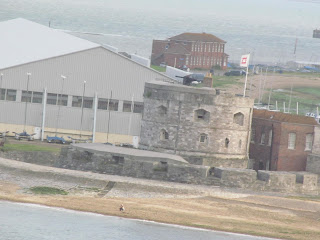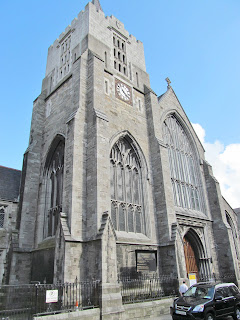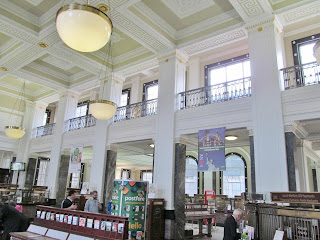Plymouth, England is located 190 miles southwest of London, Plymouth is a
city and unitary authority area built between the mouths of the rivers Plym and
Tamar. Plymouth's early history goes back to the Bronze Age when it was a
trading post for the Roman Empire. In 1403 the Breton raiders burned the town
down, which led to a series of fortifications being built including four round
towers. The remains of two of these towers can still be found at Mount Batten
and Sutton Pool below the Royal Citadel. During the 17th century Plymouth
gradually lost its prominence as a trading port and ended up opening its first
dockyard the population grew from 318 people in 1712 to 3,000 people in 1733.
During WWII the Germans bombed Plymouth in 59 raids known as the Plymouth Blitz.
The city centre and over 3,700 homes were destroyed, and over 1,000 people
perished. Charles Church was also hit and partially destroyed; it continues to
stand as an official monument to the bombing. Today Plymouth is the UK's 19th
most populated city with over 250,000 people calling it home.
Dublin, Ireland is situated at the head of a lovely bay, Dublin straddles the
River Liffey where th stream flows eastward through a hill-ringed plain to the
shores of the Irish Sea. The dark bog water made the "black pool" -Dubh Linn in
Irish, Dyfflin in Norse - that gave the city its name. Almost certainly it was
this opening from the sea, leading through the mountains to the fruitful central
plains of Ireland that originally tempted wandering Norse raiders to settle
there. In spite of its long historical development, Dublin remains a physically
small city. From Dublin Castle, it is little more than four miles to the
farthest city boundary in any direction. Dublin still manages to remain a place
with soul: the city's literary history seems to bump against you at every corner
and the pubs are open to everyone. It's not only the pubs which are accessible.
Dublin is a city on a human scale so it's easy to get around on foot. The food
is also surprisingly good, with dishes from every corner of the world as well as
local specialties such as Irish Stew or Dublin Coddle. There's little modern
architecture of any note, but the city has maintained much of its Georgian
character. Dublin is a curious, colorful place, and an easy city to enjoy.
Torshavn, Faroe Islands is the capital city of the Faroe Islands, Denmark,
and is located on southeastern Streymoy Island. In the early 9th century, the
first parliament, called the Althing, was set up. This government was dissolved
by the Faroes' incorporation into Norway in 1035, and then reformed in 1380 when
Norway was absorbed into Denmark. With Torshavn being the central meeting place,
a market soon sprang up to accommodate the parliamentary representatives and
visitors. It seemed to follow naturally that foreign monopoly traders would also
eventually establish businesses. When monopoly trading was abolished for
economic reasons in 1856, the Faroese took to fishing and bought up larger
seagoing British fishing boats. However, Torshavn had marginal harbor facilities
and was being left behind economically. In 1927, the harbor was upgraded and is
now the center of the fishing industry, commerce, transport, and trade in the
islands.





















































































































No comments:
Post a Comment